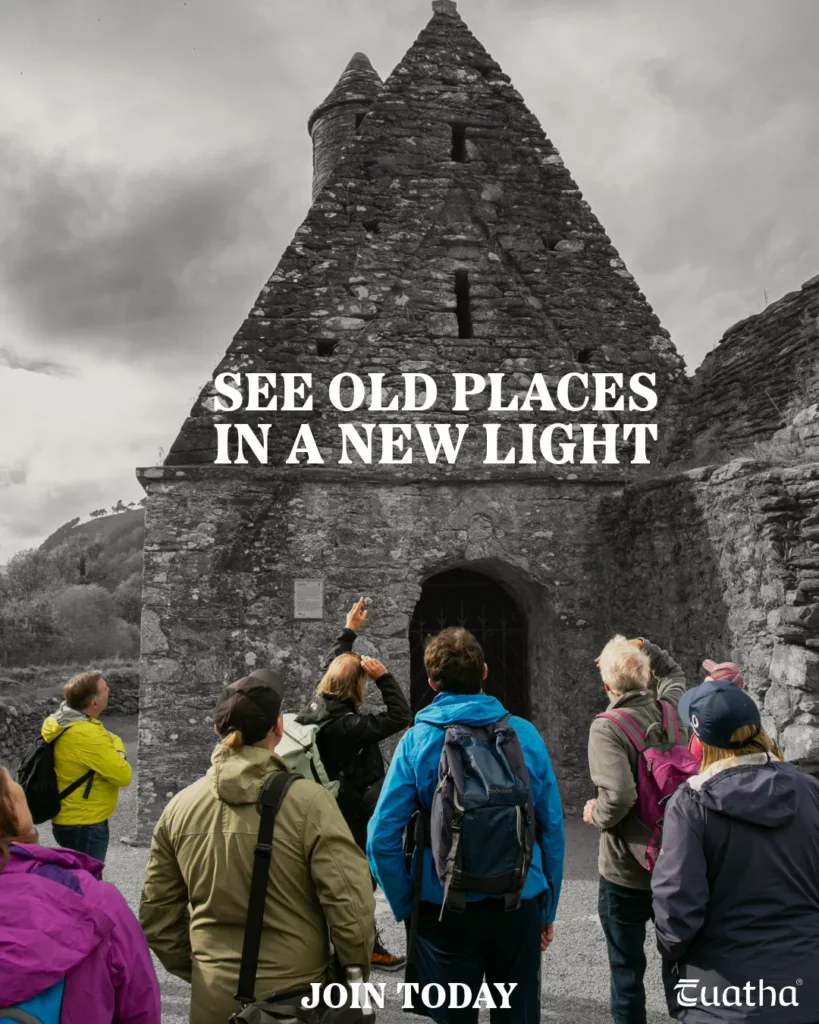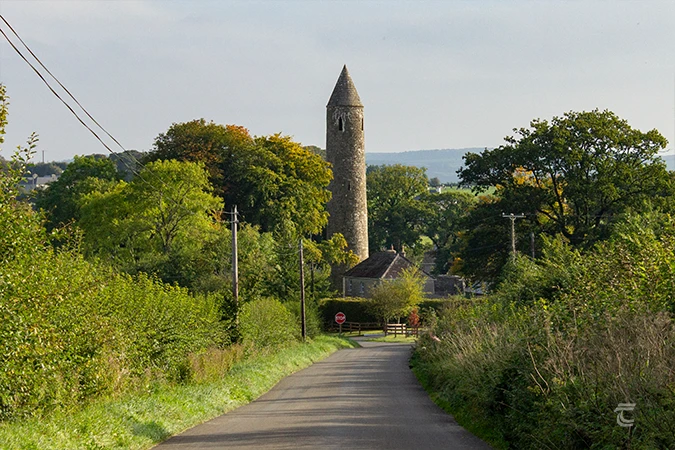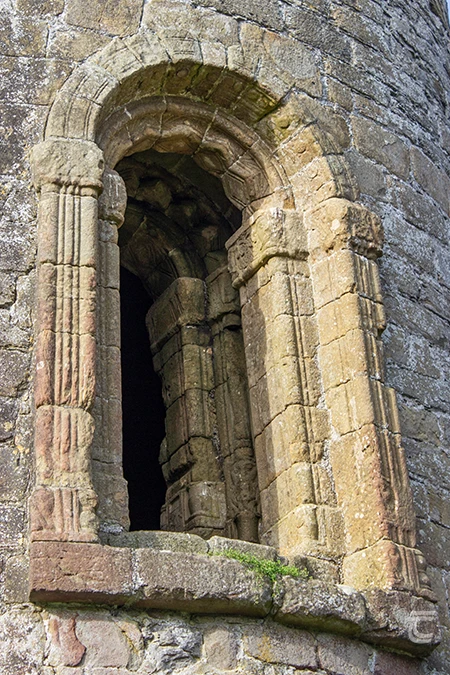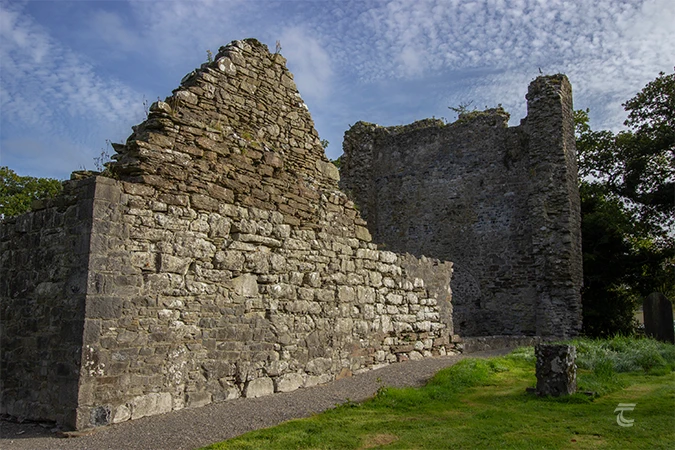Timahoe Round Tower
Timahoe Round Tower in County Laois is one of the finest examples in Ireland. It stands on the site of a monastery, said to have been founded by St Mochua in the 7th century. The dwelling where the saint lived, Teách Mochua, gives its name to Timahoe. According to the hagiography, Mochua was a warrior who converted to Christianity and became a hermit. One of the stories of Mochua tells that he had no worldly possessions apart from his psalter, a rooster, a mouse and a fly. The rooster kept the hour of matins for him so he never missed prayers, the mouse made sure he never slept more than three hours a night by licking his ears if he fell asleep while praying, and the fly would mark his position in the psalter so he never lost his place. When his three animal friends died, Mochua wrote of his sadness to his friend St Colmcille. The ever-abrasive Colmcille, is said to have responded in somewhat typically bleak fashion: ‘My brother, marvel not that thy flock should have died, for misfortune ever waits upon wealth.’
Following Mochua’s death in c.AD 657, his early monastic foundation continued to develop and grow in significance, though there is little trace of its first centuries to be seen. The fine round tower is the earliest visible trace of an early medieval monastery on the site.
For practical information about visiting this site Click Here
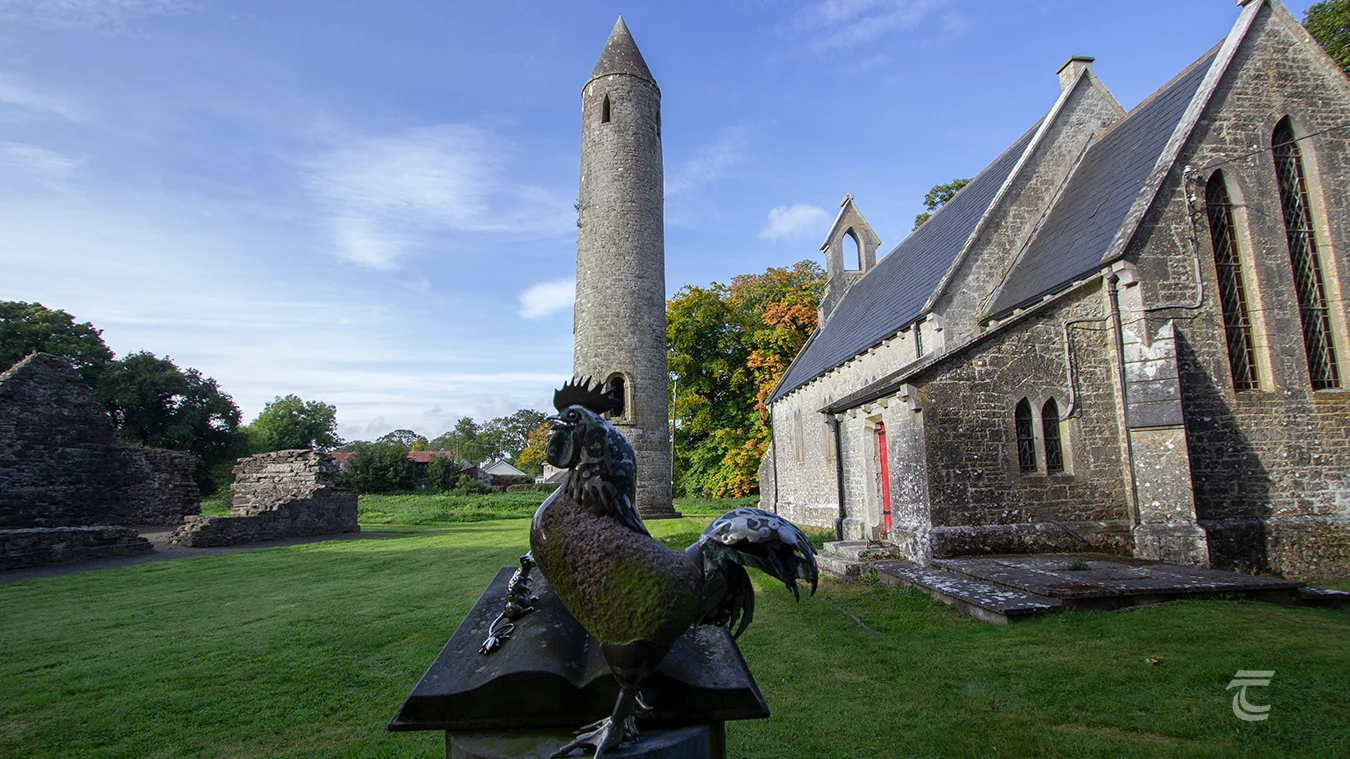
The monument to St Mochua at Timahoe Round Tower • Laois
The Features of Timahoe
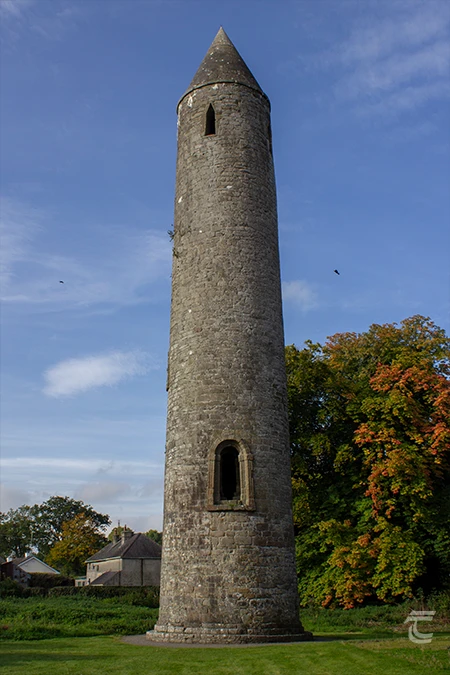
Timahoe Round Tower • Laois
Timahoe is most famous for its round tower, which is thought to date from the early part of the 12th century. It has one of the most ornate, Romanesque-style doorways of any round tower in Ireland, and on a bright morning, the wonderfully intricate carvings of interlacing chevrons and representations of human heads can be seen. If you happen to be there when the light is just right and shining in the door, you can make out an unusual figurative depiction near the base on the right hand side of the doorway as you look at it. I originally believed this figure could possibly be the long-lost sheela-na-gig of Timahoe, though on closer inspection it was revealed to be a rare example of a male Romanesque-exhibitionist figure. This doorway is positioned approximately 5 metres (16 ft) up from the ground level, with the tower itself standing almost 30 metres (98 ft) tall. There has long been debate about the function of round towers. A common claim of the past was that they were a refuge or lookout point in case of Viking attack. There have been a few recorded incidents of people seeking shelter in a round tower (usually unsuccessfully), but they were more likely used as belfries. As indicated by their name in Irish — cliogtheach — meaning ‘bell house’.
The round tower is set in a historic graveyard, where all of the visible headstones date to the 18th century and later. However, as the site of an early monastic foundation, there is no doubt that this has been an important place for Christian burial for well over a millennium. Though the discovery of a Bronze Age vessel containing cremated human bone, demonstrates that this has been a sacred place for centuries before Christianity ever arrived on these shores.
In the medieval period, an abbey was founded on the site of the early monastery under the patronage of the powerful O’More family. Following the Dissolution of the Monasteries, the abbey was granted to Sir Thomas Loftus, before being passed to Richard Cosby in 1609. The Cosbys fortified the abbey church and turned it into a tower-house in the late 16th century. A sheela-na-gig was recorded at the doorway of this structure, but no trace remains. It may have been removed in antiquity, or it may still await discovery on the site.
A Church of Ireland parish church was constructed on the site in the 18th century and another church was rebuilt on that site in the 19th century. This building was converted into a library, before becoming a heritage centre in more recent times.

Timahoe Round Tower • Laois
Upper left: the road to Timahoe • Lower left: the remains of the medieval church / tower-house • Right: the Romanesque doorway, note the figure in the lower right of the door
Top: the road to Timahoe • Middle: the Romanesque doorway, note the figure in the lower right of the door • Bottom: the remains of the medieval church / tower-house
